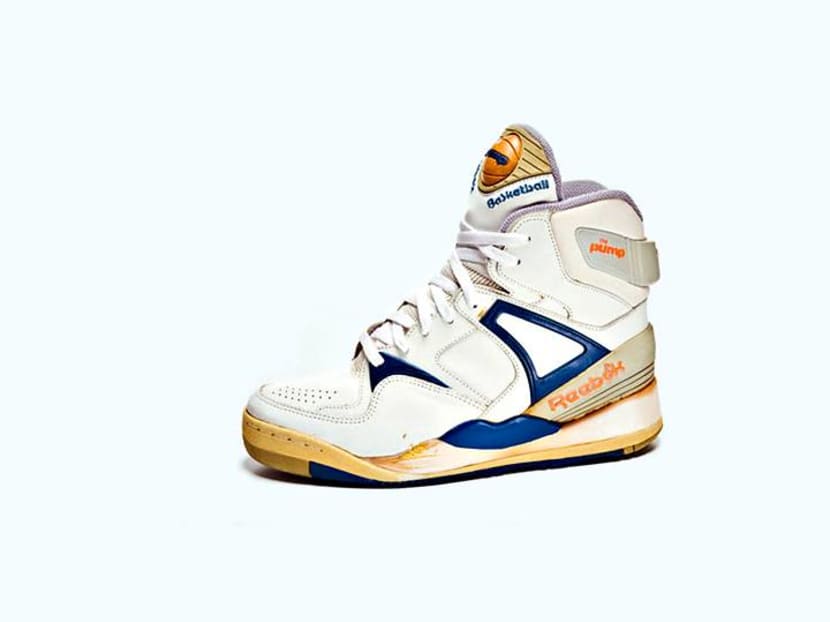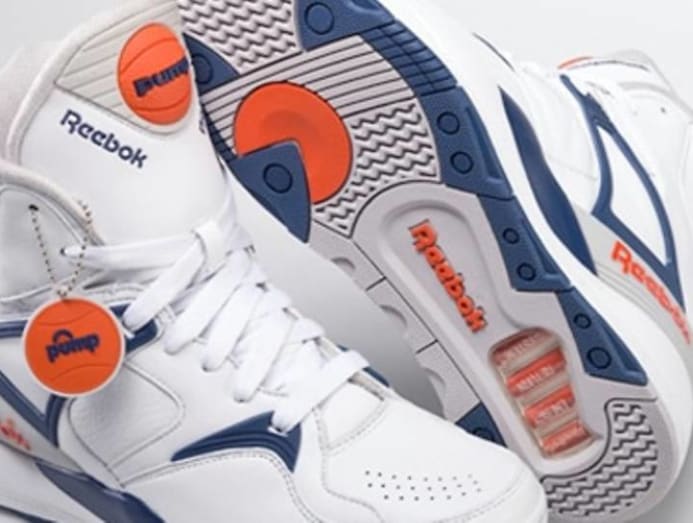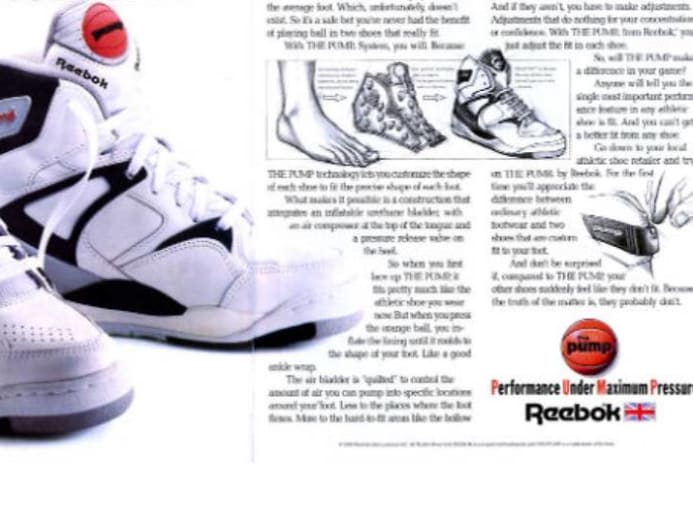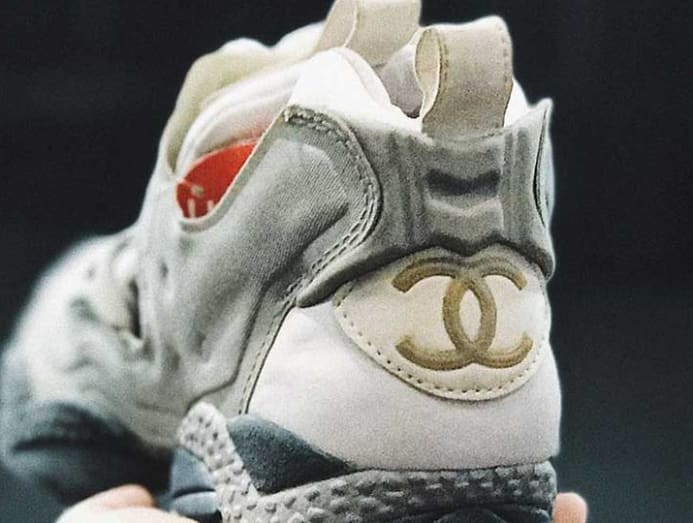Retro kicks: Did you know the Reebok Pump is 30 years old?
Even if you didn't have the money to own a pair, everyone knew exactly how the pump worked. And it didn't hurt that Shaquille O'Neal and Tupac wore them, too.

The 1989 Reebok Pump (Photo: Complex.com)
The year was 1989. The Berlin wall just came down; Michael Keaton’s Batman was fighting Jack Nicholson’s Joker; Indiana Jones was on his last crusade; and pumping air into one’s shoes became the coolest thing since sliced bread.
It’s hard to believe that it’s been a whopping 30 years since Reebok came up with the Pump.
Back then, if you were a proud owner, you were most likely the freshest (or richest) kid on the playground. Even if you didn’t have the money to own a pair, everyone knew exactly how the pump worked.
PUMP UP THE JAM
Step one: Push that big embossed ball in the tongue. Step two: Activate the air pumping action and “inflate” your shoe. Step 3: Show off as you try to dunk like an NBA basketball player while fending off your friends constantly trying to press your trainers.
At least that's how it looked to the rest of us in our white Bata school shoes.

To think that the Reebok Pump became the innovation that it was simply by being inspired by very disparate ideas: Inflatable splints used to rehabilitate injuries and medical IV (intravenous) bags.
Yes. IV bags. Who knew the answer to the new must-have sports shoe was all about having something you see in hospitals built directly into it?
THE ANSWER TO NIKE AIR
Reebok desperately needed a product to compete with longtime rival Nike’s Air technology: A new generation of Air Jordans (Michael Jordan’s popular line of Nike Air sneakers) was already making waves with a balloon in the heel that was filled with compressed gas to provide additional comfort and support.
Reebok head and CEO Paul Fireman knew the company needed a customisable shoe. And so it was up to engineer and chosen point man Paul “Litch” Litchfield to collaborate with industrial design firm Design Continuum to ask themselves: Could they make a shoe that reduced injuries by providing more support and a better fit?
The Reebok Pump with its inflatable insert and adjustable fit technology was their answer.

According to the Reebok Archive, the pump technology was all about the inflatable chambers fitted within the shoe which enabled the wearer to create a custom fit by either inflating or deflating the areas of the shoe around the ankle.
The design was clever in the way that the air chambers were quilted so only certain amounts of air could reach the most flexible parts of the foot in order to retain that movement. It offered a level of comfort, along with stability and support unheard of at the time.
In another Reebok Archive interview, Litch credited the lightbulb moment to solving a problem for athletes.
“We listened to the college players and pro players and that’s why we made the Pump. We wanted to make a shoe that was more supportive. As (the players) were getting bigger, stronger, the high-top shoes were just big shoes. Today they wouldn’t wear shoes that high, they’d wear mid cuts or low cuts but back in the day the philosophy was that you want to support the ankle so that’s why we did the Pump,” he explained.
It was the very innovation Reebok needed to keep rival Nike on their toes and pretty much rule the 1990s.
IT'S THE SHOE YOU WANT, NOT THE SHOE YOU NEED
Reebok has called the Pump "one of the most amazing innovations in footwear...since the shoe lace" and many, inside and outside of the industry, sneakerhead or not, will readily agree.
It was the exciting dawn of high-tech development in the sports apparel world where science was fused with footwear and then cleverly marketed as “want” and not just a “need”.
Despite its high price for the average kid, the Pump became something of a status symbol on urban basketball courts and in schools all over the world throughout the 1990s. You couldn’t find a playground without them.
FROM A NO-LOOK DUNK TO SHAQ TO TUPAC
A little marketing push of course didn't hurt either. Nike had Michael Jordan, so Reebok went with NBA All-Star Dominique Wilkins to advertise and rock their eponymous Pump basketball shoe on and off the court.
Basketball-related Pumps would become even more popular with the introductions of the Twilight Zone, Omni Zone, and SXT Pump in 1990. But it was another innovative new kid on the block who really cemented the Reebok Pump in NBA history.
It was the 1991 NBA Slam Dunk Contest and Dee Brown of the Boston Celtics had entered the slam dunk contest as the underdog against fierce competition.
All that changed when he took home the crown with the now iconic "no look" dunk, but not before playing to the crowd and pumping his Reebok Pump Omni Lites before taking flight and making his competition-winning move.
This had kids all over the world amazed by their technology and sales of the Reebok Pump reportedly skyrocketed.
Considered as the bonafide rival to Nike and Michael Jordan’s mass empire, the Pump grew throughout the early and mid-90s.
Shaquille O’Neal was one of Reebok's biggest stars with his own audacious brand of pumps that matched his personality, the Shaq Attaq. Originally released in 1992, it was the first signature sneaker for O'Neal from Reebok. They featured a leather and suede upper with the Pump technology on the tongue and Graphlite. They were retroed for the first time in 2013, shortly after Shaq returned to the brand.
The Pump was also a "Hollywood" star, featuring in a variety of different films and TV shows, most notably, two of hip-hop artist Tupac Shakur’s films: Juice and Above The Rim. An Above The Rim Pump also came out with the release of the film.
"PUMP UP AND AIR OUT": FOR GOLFERS AND TENNIS PLAYERS TOO
The Reebok Pump may have debuted as a basketball shoe, but the Pump quickly transitioned to a number of brand-new arenas. Then unknown tennis star Michael Chang (who went on to win the French Open at 17 years old) popularized the Pump on the court with the Court Victory Pump, while golfer Greg Norman even hit the links in his own Pump-equipped golf spikes.
AND THEN CAME THE INSTAPUMP
Reebok's InstaPump technology was the next iteration of the Pump evolution, with the use of a "pump gun" that now filled the bladder with carbon dioxide.
In 1994 ,the Reebok InstaPump Fury (or Reebok Pump Fury) emerged to prove to the disbelievers that a running shoe without laces could actually work.
Determined to do for runners what Pump originally did for basketball kicks five years earlier, the sneaker created used a Pump Full-Foot Chamber system instead of laces and lightweight GraphLite material in place of a midsole.
Now decades later, the InstaPump Fury is still considered a huge technical achievement in footwear. Its cut-out silhouette, Pump, and split midsole seemed so way ahead of its time that even know, it still gets attention whenever it hits the street.
CHANEL X REEBOK INSTAPUMP FURY

During Instapump Fury’s 20th anniversary in 2014, Reebok released 27 exclusive collaborations and releases to celebrate, sending sneakerheads clamoring for a pair.
It is no stranger to being reworked via collaborators though. In 2000, Chanel put its double C branding on the sneaker which for many collectors was deemed a unicorn.
The Chanel x Reebok InstaPump Fury was never produced beyond the runway, with one rare example surfacing at 2015’s Out Of The Box: The Rise Of Sneaker Culture exhibition.
According to the American Federation of Arts, which organised the traveling exhibition in partnership with Toronto’s Bata Shoe Museum, “The Reebok x Chanel InstaPump Fury is one of the first and most elusive high fashion sneaker collaborations.”
THE FUTURE
Indeed, the Pump has come a long way. Other companies have tried their hand with it as well, but it remains, till this day, one of Reebok's signature technologies.
Some might argue that it's currently riding more on nostalgia than performance but undeniably, it has evolved significantly throughout its history and has sealed its place in sneaker legend.
So yes, we remember when some people made fun of kids who wore pumps way back in 1989. “What idiot would wear that tacky shoe with a big basketball on top” you would hear muttered under resentfully envious breaths.
But that’s because we were just jealous that the only way we could achieve a perfect fit without the Reebok Pump was to double our socks.





